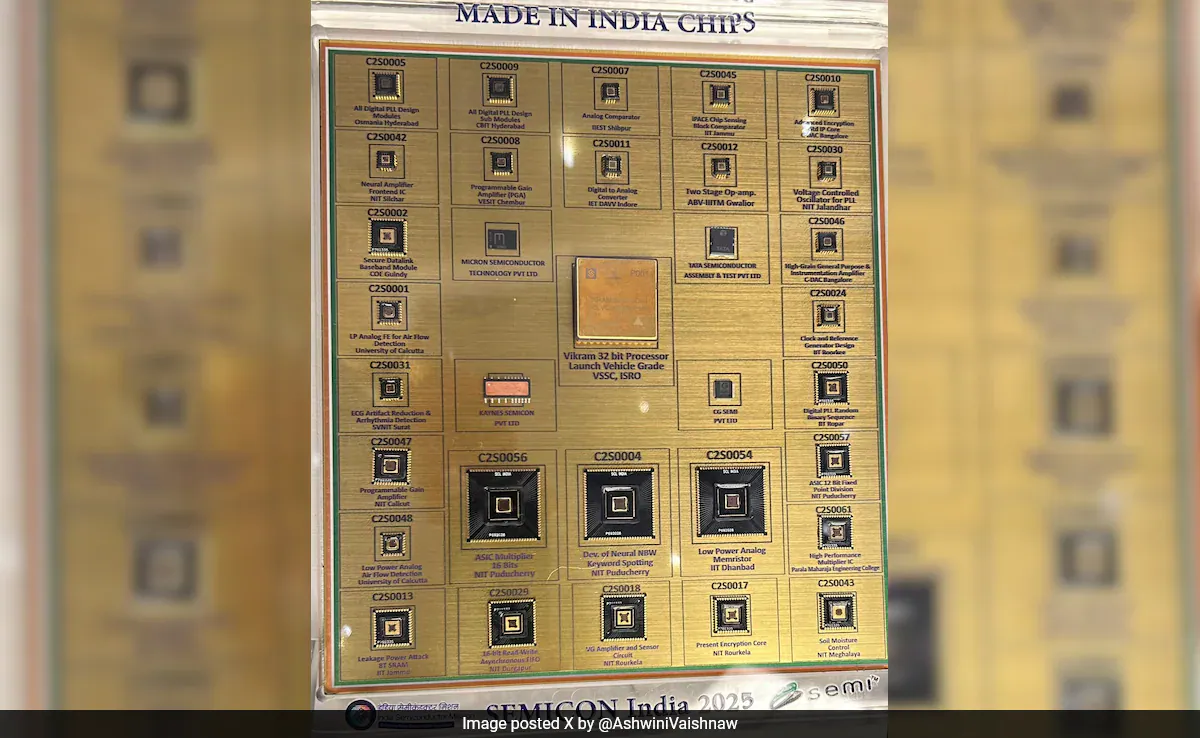
India’s semiconductor journey achieved a breakthrough on Tuesday when Prime Minister Shri Narendra Modi was presented with the first set of Made-in-India chips from a pilot production line.
Union Minister of Electronics and Information Technology, Shri Ashwini Vaishnaw, described the achievement as a “moment of pride,” crediting the Prime Minister’s farsighted vision, strong will, and decisive leadership for making the milestone possible.
Launched in December 2021, the India Semiconductor Mission (ISM) has moved from approvals to production in just three and a half years. Vaishnaw said that with GDP growth of 7.8% and the first indigenous chips now a reality, “Bharat stands as a lighthouse of stability.”
At Semicon India 2025, 12 Memorandums of Understanding (MoUs) were signed to boost indigenous capabilities in semiconductor design and manufacturing. Focus areas include camera modules, microphone buds, miniature packaging, and a stronger talent development ecosystem, according to Indian news reports.

To drive innovation further, the government announced the Deep Tech Alliance, backed by $1 billion in commitments. Initially focused on semiconductors, the Alliance will expand into frontier sectors such as clean energy, quantum technologies, biotechnology, and space, providing crucial venture capital support for emerging industries.
Building on the foundation of ISM 1.0, which established fabs, OSAT facilities, capital equipment, and material supply chains, the government is preparing to launch ISM 2.0. The new phase aims to transform India into a “product nation” by scaling production and ensuring long-term competitiveness.
Vaishnaw highlighted that semiconductor production in India is already 15–30% more cost-competitive than global benchmarks, with exports set to play a major role in approved projects. He emphasized India’s careful, professional approach to project approvals, ensuring sustainability over speed.
Global confidence in India’s semiconductor mission was evident at the event, with leading industry players such as ASML, Lam Research, Applied Materials, Merck, and Tokyo Electron in attendance.
In a symbolic gesture, 20 chips designed and manufactured by Indian students at the Semiconductor Laboratory (SCL), Mohali, were also presented to the Prime Minister. With 78 universities now using advanced electronic design automation (EDA) tools, India is nurturing a robust talent pipeline that already represents nearly 20% of the global semiconductor workforce.
India’s startup and design ecosystem is also gaining momentum, with over 28 startups transitioning from project to product. Institutions such as IIT Madras have developed indigenous processors and microcontrollers, while the Design Linked Incentive (DLI) scheme has generated valuable intellectual property.
With the global semiconductor industry projected to reach $1 trillion by 2030, India is positioning itself as a trusted hub for technology, talent, and innovation. Union Minister Vaishnaw affirmed that under Prime Minister Modi’s leadership, the country is on track to become a global leader in semiconductors, fulfilling the vision of making India a semiconductor powerhouse for the world.
Follow The Times Kuwait on X, Instagram and Facebook for the latest news updates












